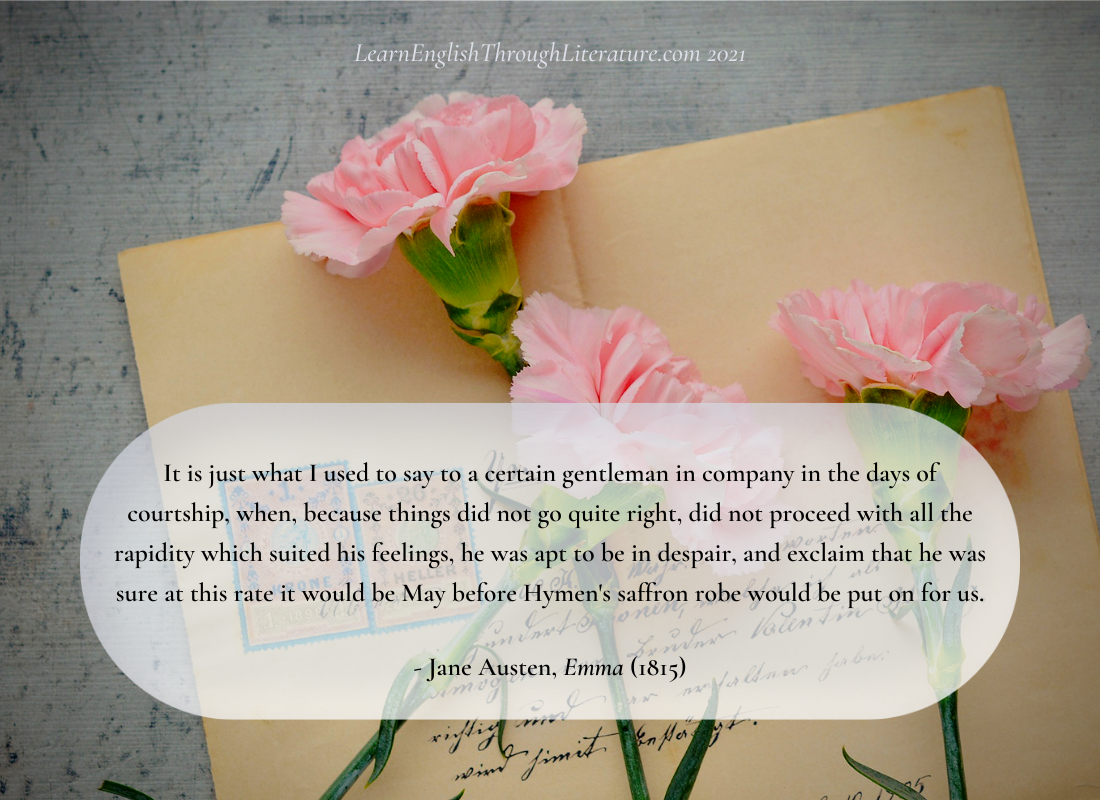‘Used to’ or ‘be used to’? 🤔
At first glance it might seem that both of these expressions are the same, but they are not!
They imply (help us to understand something without actually saying it directly) two different things.
Today’s Lesson will help to clarify the differences between them, with examples taken from another English classic – Jane Austen’s comic and charitable tale, Emma (1815).
…
📝 ‘USED TO’
Subject + ‘Used to’ + Infinitive
✍️ This is the construction we use when we are talking about a continual action in the past that has since changed, stopped, or become different in some way.
Even if you don’t specifically mention what the present situation is, we understand that the past regular activity no longer continues into the present.
📙 “… she is as modest and humble as I used to think him.”
– Jane Austen, Emma (emphasis mine)
👉 In other words, Emma (the speaker) no longer thinks that Mr Elton (‘him’) is modest and humble.
📙 “I used to be quite angry with Selina; but really I begin now to comprehend that a married woman has many things to call her attention.”
– Jane Austen, Emma (emphasis mine)
📙 “Miss Woodhouse,” said Frank Churchill, after examining a table behind him, which he could reach as he sat, “have your nephews taken away their alphabets— their box of letters? It used to stand here. Where is it?”
– Jane Austen, Emma (emphasis mine)
This idea of a change having happened between the past and present is very important! Even when we want to use ‘used to’ in a negative sense, the change is there:
✒️ For example: I never use to read classic literature.
This means: I never did this in the past (BUT now I do read classic literature).
✒️ Here is another example: She never use to be afraid of the dark when going to sleep.
It means: She never was afraid of the dark (BUT now something has changed and she is afraid of sleeping in total darkness).
✍️ NOTE: When we use ‘used to’ in a negative construction or when asking questions (see below for an example), we drop the ‘d’ when spelling ‘used’ even though this can hardly be noticed in pronuncation. Notice how both examples above with ‘never use to’ do not have a ‘d’.
✒️ E.g. Did you use to struggle with English writing skills?
✒️ E.g. Before his accident, he never use to drive his car so carefully as he does now.
In Part 2 of this Lesson, we will look at ‘be used to’ and how it is used differently from the ‘used to’ construction explained here.




